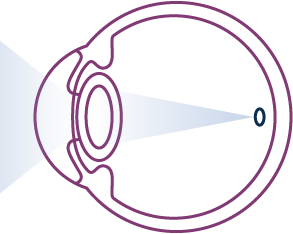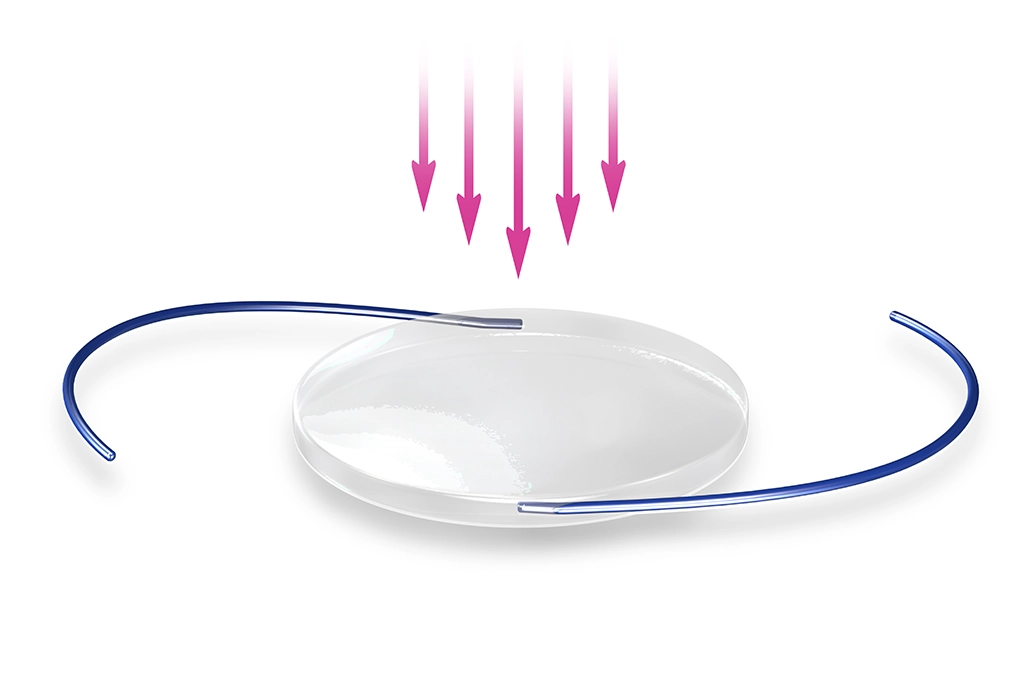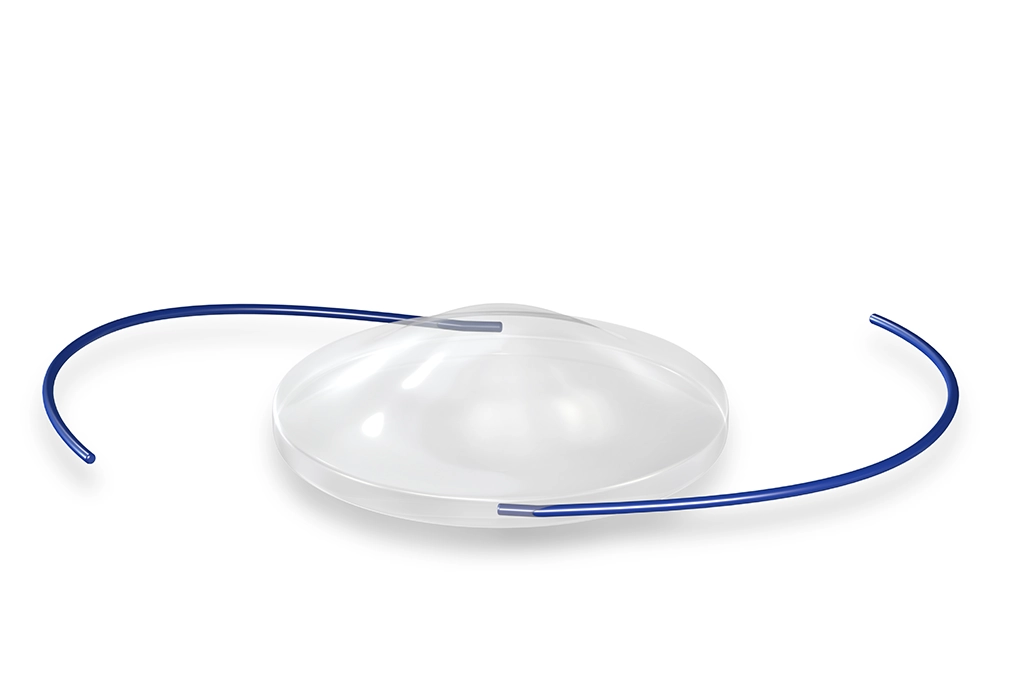Cataract surgery is the most performed procedure in the United States. About 50% of Americans will develop cataracts by age 75 and, if left untreated, they can cause blindness.1
RxSight: Light Adjustable Lens™
Cataract Surgery
What are cataracts?
Cataracts form when the proteins and fibers in your eye’s natural lens begin to break down, causing hazy or cloudy vision. Once begun, cataracts only worsen until surgery is necessary.
Clear Lens

Light enters the eye through the cornea, passes through the lens and is focused onto the retina, providing a crisp, clear image.
Clouded Lens

Less light is able to pass through the clouded lens and then becomes diffused or scattered, resulting in blurry vision and faded colors.
How does cataract surgery work?
During surgery, a patient’s natural lens is removed and replaced with a clear synthetic one. The procedure usually takes approximately 15 minutes. If you have cataracts in both eyes, each eye is usually done on separate days. Typically, cataract surgery is performed while you are awake, though not until numbing eye drops have taken effect so that you don’t feel discomfort.
Clouded lens removed

Intraocular lens (IOL) implanted in place
How the Light Adjustable Lens Works
The First and Only Lens That Can Be Adjusted After Surgery
The Light Adjustable Lens is made of a special photosensitive material that changes the shape and power of your implanted lens in response to ultraviolet (UV) light to optimize your vision.
The Light Delivery Device™ (LDD™) non-invasively delivers this UV light to precisely reshape your lens based on the visual correction that is needed to target your custom prescription.
RxSight offers two lenses in the Light Adjustable Lens platform: the Light Adjustable Lens and the Light Adjustable Lens+™. Your doctor will determine the lens that is best suited to your eyes. Both the LAL and LAL+ provide the same opportunity to customize your vision with your doctor after surgery.

UV light exposure

Modified shape
Light treatment schedule
UV light treatments will be performed in your doctor’s office after your eye has healed. Depending on your desired visual outcome, you may have 1–3 light treatments, followed by two “lock-in” treatments to prevent further changes.
Initial Light Treatment
Additional Light Treatments
(as desired)
Lock-In Treatments
(two required)

approximately 2-3 weeks after surgery
approximately 3 days after each prior light treatment
approximately 3 days apart
Fixed vs. Adjustable lenses
With other lenses, you have to make a lot of decisions about the vision you want before your cataract surgery. Once implanted, those lenses can’t be changed; they’re what’s known as “fixed.”
The Light Adjustable Lens, however, is an adjustable lens. This means that the only decision you have to make before your surgery is to choose the Light Adjustable Lens. The rest can be made after your surgery once your eye has healed.
You and your surgeon then have the ability to adjust the lens and optimize your vision based on your unique preferences and lifestyle requirements. So you will truly have vision that’s just for you.
What to Expect After Surgery
About three weeks after your cataract surgery, you’ll visit your doctor’s office to begin the light treatments to customize your vision. During these visits, you and your doctor work together to achieve the best possible visual outcome—the vision that’s best for you and your lifestyle.
Studies have shown that patients who received the Light Adjustable Lens (LAL) and the recommended post-surgery treatments were almost twice as likely to achieve 20/20 vision or better without glasses compared to cataract patients who have standard lens implants.2
Why do I have to wear UV Protective Glasses?
While your vision is still in the adjustment phase, you will be required to wear glasses that prevent UV light from altering your lens to protect it before the final lock-in.
